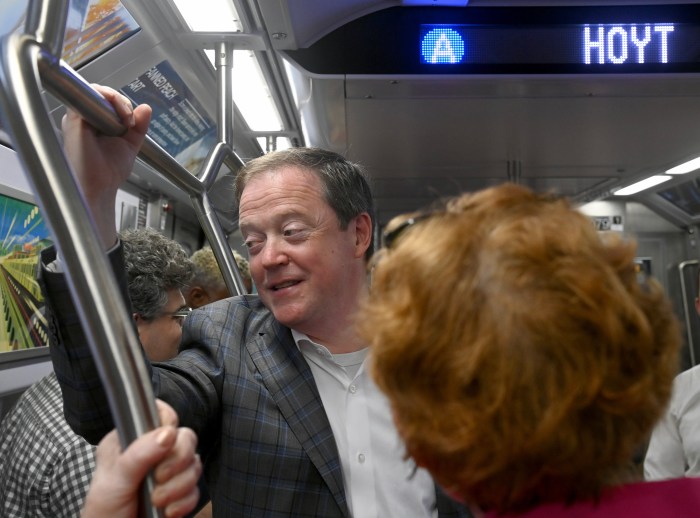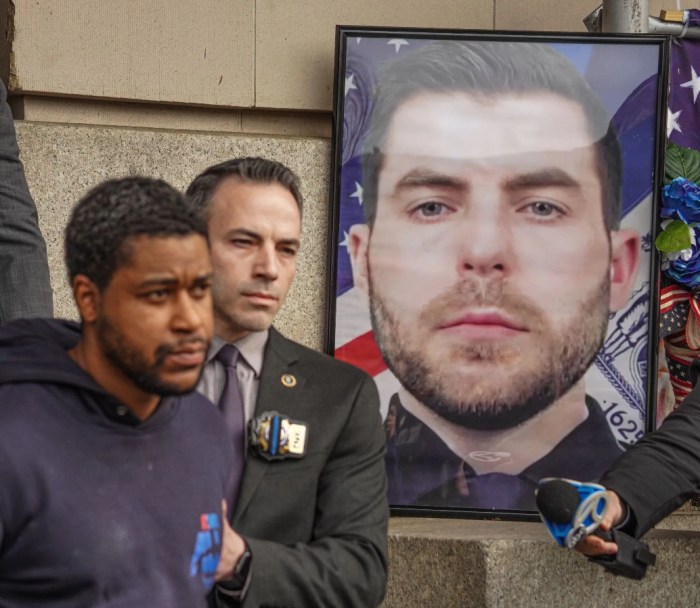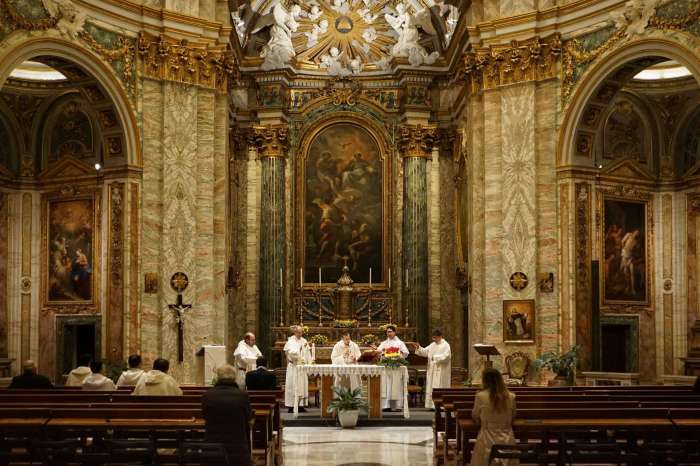The proposal by William Gottlieb Real Estate and Aurora Capital Associates to redevelop a block of Gansevoort St. is nothing short of an assault on the city’s Landmarks Law. The Gansevoort Market Historic District, designated in 2003, is truly one of New York City’s most unique historic districts. What makes it so special is that it has preserved the unique built fabric of the once-teeming Meat Market.
Yes, as representatives of the developers repeatedly stated at an Oct. 15 special meeting of Community Board 2, the district’s history is one of flux, of buildings being cut down and repurposed.
But when the Landmarks Preservation Commission designated this small district — and despite its outsize significance, it is a very small district — what it was aiming to preserve was, obviously, the landscape at that moment, in 2003. It’s simply ridiculous — and a threat to the very spirit of the city’s Landmarks Law — for the developers to argue that much of this block, between Greenwich and Washington Sts., should be rebuilt to the height it was in the 1800s. What L.P.C. instead landmarked was the street as it has largely appeared since the mid-20th century, when the Meatpacking District was in its heyday.
Yes, the meatpackers are mostly gone now, save for those left in the city-owned Co-op building, which is protected by a deed restriction for market use dating back to when the Astors owned most of the Meat Market. But the built fabric that the meatpackers created — a unique assortment of modified buildings that were perfectly suited to their uses — remains. And again, that is what was landmarked.
Everyone knows about the district today, of course, as “Meatpacking” has become one of the city’s premier nightlife destinations. Though neighbors aren’t so happy about that transformation (you can read about all the bar fights in our Police Blotter), they at least are glad that it wasn’t rezoned to allow residential use, which would have ratcheted up development pressure.
However, as Zack Winestine, a leader of Save Gansevoort, put it, this block of Gansevoort St. is among the world’s most prime real estate. The developers can certainly make ample profits by finding conforming uses for the existing structures. The Gansevoort Market food court, for one, has been a hit.
This block, in short, is the last one in the district that features the historic low-scale one- and two-story structures with overhanging metal canopies that the district was once famous for. Many uses have come and gone: the meatpackers for the most part, the transgender hookers (who now mostly find their customers online), the sex clubs, the underground parties. But the built fabric remains. And that is what we must preserve.
This low-rise feeling is what makes the Meatpacking District, and the Village, in general, so appealing. And this one spot is really the iconic block of the Gansevoort Market Historic District. Was it any surprise that a photo of 52 Gansevoort St. was the cover image of the designation report?
The developers say they would save some of the buildings they deem aesthetically pleasing, including the Moderne-style one at the corner of Greenwich St. and the Gansevoort Market building, the latter which they concede was skillfully and gracefully cut down from its former height.
However, community residents, preservationists, Community Board 2 and Assemblymember Deborah Glick all counter that the entire block — as a whole — is beautiful. And they’re right! First of all, the very low-scale nature of it is soothing and pleasing. More to the point, these cut-down former tenements — in their small size, architectural detailings and subdued colors — are simply gorgeous in their own unique way. One speaker at the meeting was spot on in likening them to an Edward Hopper painting.
Admittedly, a row of former purpose-built meat lockers on Washington St. in the historic district was replaced by a modern, industrial-looking building with angular exposed beams — playing off the girders of the neighboring High Line — and is now the headquarters for Samsung.
But Gansevoort St. is different. Its buildings, because they were formerly tenements, are more beautiful. That they were lowered over the years makes them that much more unique, and again, reflective of the historic market. That they have grittiness, again, evokes the old Meat Market. A sterilized replacement is the last thing we want.
In sum, the developers’ plan would, as Andrew Berman of the Greenwich Village Society for Historic Preservation put it, “obliterate” this block and its history.
L.P.C. will hold a hearing on the application on Nov. 10. Save Gansevoort and G.V.S.H.P. are urging a huge turnout to demonstrate the opposition. To approve this plan would be a travesty.


















